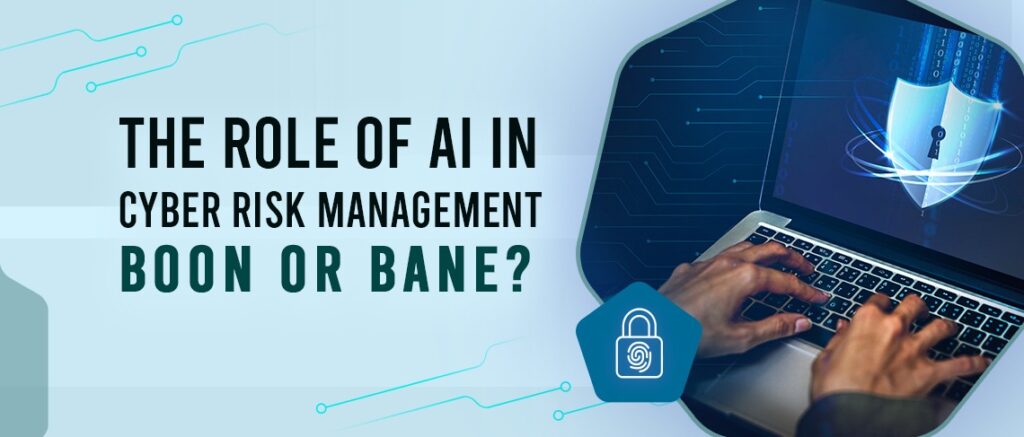The growing reliance on virtual structures has delivered remarkable possibilities for organizations. However, it has also exposed organizations to substantial challenges, particularly surrounding IT security. You’ve in all likelihood heard the terms “cyber chance” and “cybersecurity,” however do you recognize their nuances?
Many business owners and even IT professionals tend to conflate those phrases. However, distinguishing between cyber chance and cybersecurity is essential to designing powerful strategies that protect no longer just systems however also organizational durability.
This blog breaks down the variations between cyber threats and cybersecurity, explains their roles in digital protection, and highlights actionable steps to manage dangers while leveraging cybersecurity to its full extent.
What Is Cyber Risk?
Cyber chance refers back to the exposure businesses face because of potential cyber threats. These risks are created while vulnerabilities in systems, networks, or tactics could be exploited to cause harm to an organisation.
Potential Cyber Threats
Here are some common cyber dangers that can disrupt corporations or compromise touchy records:
• Data Breaches: Unauthorized get admission to to sensitive statistics like client records, intellectual property, or financial facts.
• Ransomware Attacks: Malicious software that locks users out in their systems until a ransom is paid.
• Phishing Scams: Exploiting employees to advantage of access to private systems through misleading emails or texts.
• Insider Threats: Security breaches because of employees or companions, each malicious or unintended.
Vulnerabilities and Impact
Cyber dangers get up from vulnerabilities like old software program, susceptible passwords, or even negative training among employees. Left unmitigated, these vulnerabilities can result in severe results, consisting of financial loss, reputational damage, and regulatory consequences (e.G., GDPR fines).
For business proprietors, knowing your unique cyber dangers is step one in protecting your agency.
What Is Cybersecurity?
Cybersecurity is the set of technologies, procedures, and fine practices designed to protect structures, networks, and records from cyber threats.
While cyber threat defines what could cross wrong, cybersecurity specializes in growing safeguards to limit the chance—or impact—of those risks.
Key Differences Between Cyber Risk and Cybersecurity
Although they are interrelated, cyber risk and cybersecurity focus on different aspects of digital security. Understanding their distinctions ensures an organization develops a well-rounded defensive strategy.
Aspect Cyber Risk Cybersecurity
Definition Refers to the potential exposure to cyber threats Focuses on measures to protect against cyber risks.
Key Concern Identifies what could happen Ensures actions are taken to prevent or resolve.
Scope Broad, covering all risks that could affect IT systems More focused on specific tools, technologies, and practices
Purpose Helps prioritize areas of concern Provides actionable solutions to reduce threats.
For any organization, understanding these distinctions helps leaders allocate resources more effectively and implement solutions that address specific needs.
Managing Cyber Risk Effectively
Managing cyber risk isn’t always the simplest about the generation—it calls for a complete strategy that combines evaluation, mitigation, and guidance. Here’s a way to technique it step by step.
1. Conduct Risk Assessments
Identify capacity protection risks on your corporation’s processes, tools, and networks. Ask questions like:
• What touchy information do we deal with?
• Where are our best technical vulnerabilities?
• Are we compliant with applicable information security guidelines?
Tools like SecurityScorecard can provide an in-depth analysis of your enterprise’s risk posture.
2. Implement Mitigation Measures
Once risks are diagnosed, proactive steps may be taken to mitigate them, which include:
• Regularly updating software to patch vulnerabilities.
• Enhancing password protection protocols with multi-factor authentication (MFA).
• Segregating networks to restrict harm from breaches.
3. Develop an Incident Response Plan
Even with quality precautions, no business enterprise is resistant to cyber threats. Having a strong incident reaction plan guarantees your group is aware of a way to react. Define roles, verbal exchange strategies, and restoration timelines.
4. Regularly Monitor and Review
Cyber risks evolve as generation and attack techniques grow extra state-of-the-art. Continuously monitor for new threats and periodically review your risk management approach.
The Role of Cybersecurity in Risk Management
While dealing with cyber danger focuses on expertise on what ought to pass wrong, cybersecurity addresses the way to prevent and respond. Both ideas are tightly connected—effective cybersecurity practices are integral to reducing the usual threat publicity.
For instance:
• A present-day firewall reduces the danger of unauthorized gadgets getting the right of entry.
• Employee schooling minimizes the hazard of falling for phishing assaults.
• Cutting-edge encryption protects sensitive facts although hackers manage to infiltrate networks.
Ultimately, cybersecurity technology and practices are the operational equipment groups depend on to preserve diagnosed cyber risks beneath manipulation.
Real-world Examples
Looking at sensible examples, we can higher see how cyber danger and cybersecurity intersect.
1. Target’s Data Breach (2013)
• Cyber Risk: Exposure via third-celebration companies with inadequate gadget security.
• Cybersecurity Measures: After the breach, Target invested in higher seller hazard control and implemented real-time change detection technology.
2. Maersk Ransomware Attack (2017)
• Cyber Risk: Outdated Windows operating structures caused vulnerabilities.
• Cybersecurity Measures: The corporation reinforced patch management policies and improved its cybersecurity infrastructure to prevent comparable issues in the future.
These examples exhibit how identifying risks and deploying cybersecurity measures are both important to organizational resilience.
Bridging the Gap Between Risk and Security
Cyber threats are constantly evolving, requiring groups to live vigilant. While cyber hazard lays the muse for information potential vulnerabilities, cybersecurity ensures realistic answers are carried out.
Business proprietors ought to recognize that neither exists in isolation. A holistic method that mixes threat control with sturdy cybersecurity measures is the fine defense.
By adopting this combined approach, your enterprise can’t most effective safeguard sensitive facts however also strengthen its recognition and make sure lengthy-term achievement.
If you are looking for a cyber security company UAE for your company, connect with Zelar Trust.



